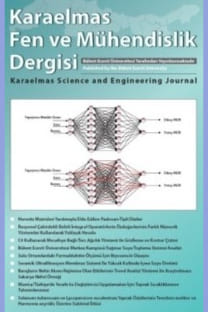Timokinon’un Bupivakainin Neden Olduğu Kardiyotoksisite Üzerine Etkileri
Bupivakain bölgesel anestezide en sık kullanılan lokal anesteziklerden biridir. Yanlışlıkla sistemik dolaşıma verilen aşırı doz bupivakain, ventriküler aritmilere ve kardiyak arreste sebep olabilmektedir. Bupivakaine bağlı hasta ölümlerini azaltmak amacıyla yeni tedavi yöntemlerinin araştırıldığı deneysel çalışmalar yapılmaktadır. Timokinon antienflamatuar, serbest radikal temizleme ve güçlü antioksidan özelliklere sahiptir. Timokinon miyokardiyal iskemi reperfüzyon hasarı ve aritmilere karşı koruyucu etkilidir. Siklofosfamid’in neden olduğu kardiyak toksisiteyi engellediği bildirilmiştir. Ancak, timokinon’un bupivakain’in neden olduğu kardiyak toksisite üzerine etkileri araştırılmamıştır. Bu çalışmanın amacı timokinon’un bupivakain kardiyotoksisitesi üzerine tedavi edici etkisini araştırmaktır. Çalışmamızda 12 adet erkek Wistar albino türü sıçan iki gruba ayrıldı. I Kontrol grubu ve II Timokinon grubu. Bupivakain her iki grupta anestezi altındaki hayvanlara 3 mg/kg/dk dozda kalbin durduğu ana kadar asistoli süresi intravenöz iv yolla infüzyonla verildi. Timokinon grubunda 20 mg/kg/ml dozda timokinon kontrol grubunda ise timokinonun çözücüsü olan 1 ml hacimde 1:1 oranında DMSO/serum fizyolojik karışımı, bupivakain infüzyonundan 10 dakika önce intraperitonal ip. yolla bolus enjeksyon ile verildi. Timokinon verilen grupta bupivakain verildikten sonra, ortalama arteriyal kan basıncı’nın %50 azaldığı zamana kadar geçen süre kontrol grubuna göre anlamlı bir artış göstermiştir Kontrol: 499 ± 26 sn ve timokinon: 714 ± 35 sn, P
Anahtar Kelimeler:
Bupivakain, Kardiyotoksisite, Timokinon, Sıçan
The Effects of Thymoquinone on Bupivacaine-Induced Cardiotoxicity
Bupivacaine is one of the local anesthetics which is most commonly used in regional anesthesia. Bupivacaine which is given in excessive doses to systemic circulation by mistake may lead to ventricular arrhythmias and cardiac arrest. Experimental studies investigating new treatment methods have being conducted to reduce bupivacaine-induced patient deaths. Thymoquinone has anti-inflammatory, free radical scavening and strong antioxidant properties. Thymoquinone is protective agent against myocardial ischemia/reperfusion injury and arrhythmias. It has been reported that thymoquinone inhibits cyclophosphamide-induced cardiac toxicity. However, the effects of thymoquinone on bupivacaine-induced cardiac toxicity have not been researched. The aim of the present study is to research the therapeutic effect of thymoquinone on bupivacaine-induced cardiotoxicity. 12 male Wistar albino rats were divided into two groups in our study. I Control group and II Thymoquinone group. Bupivacaine at a dose of 3 mg/kg/dk was administered in both group via intravenous iv. infusion until the time of cardiac arrest asystole time in anesthetized animals. Thymoquinone, at a dose of 20 mg/kg/ ml and its solvent DMSO/SF mixture 1:1 in a volume of 1 ml was given with bolus injection via intraperitoneal infusion 10 min prior to the bupivacaine infusion respectively in thymoqinone and control groups. The time to 50% decrease in mean arterial blood pressure was significantly increased in the thymoquinone group compared to the control group following the bupivacaine administration Control: 499 ± 26 s and thymoquinone: 714 ± 35 s, P
Keywords:
Bupivacaine, Cardiotoxicity, Thymoquinone, Rat,
___
- Ali, BH., Blunden, G. 2003. Pharmacological and toxicological properties of Nigella sativa. Phytother Res., 17(4): 299-305.
- Bilir, A., Yelken, B., Kaygisiz, Z., Senturk, Y. 2006. The effects of dopexamine in bupivacaine and ropivacaine induced cardiotoxicity in isolated rat heart. Saudi Med. J., 27(8): 1194- 1198.
- Castle, NA. 1990. Bupivacaine inhibits the transient outward K+ current but not the inward rectifier in rat ventricular myocytes. J. Pharmacol. Exp. Ther., 255(3): 1038-46.
- Clarkson, CW., Hondeghem, LM. 1985. Mechanism for bupivacaine depression of cardiac conduction: Fast block of sodium channels during the action potential with slow recovery from block during diastole. Anesthesiology, 62(4): 396-405.
- Cooper, MH., McClure, JH. 2008. Anesthesia chapter from saving mothers lives reviewing maternal deaths to make pregnancy safer. Br. J. Anaest., 100(1): 17-22.
- Dony, P., Dewinde, V., Vanderick, B., Cuignet, O., Gautier, P., Legrand, E., Lavand’homme, P., Kock, M. 2000. The Comparative Toxicity of Ropivacaine and Bupivacaine at Equipotent Doses in Rats. Anesth. Analg., 91: 1489-92.
- Tian, J., Li, Y. 2016. Comparative effects of vitamin C on the effects of local anesthetics ropivacaine, bupivacaine, and lidocaine on human chondrocytes. Rev. Bras. Anesth., 66(1): 29-36.
- Valenzuela, C., Delpon, E., Tamkun, MM., Tamargo, J., Snyders, DJ. 1995. Stereoselective block of a human potassium channel (K+) by bupivacaine enantiomers. Biophys J., 69(2): 418-27.
- Weinberg, GL. 2008. Lipid infusion therapy: translation to clinical practice. Anesth Analg, 106: 1340-2.
- Weinberg, GL. 2010. Treatment of local anesthetic systemic toxicity (LAST). Reg Anaest Pain. Med., 35(2): 188-193.
- Woo, CC., Kumar, AP., Sethi, G., Tan, KH. 2012. Thymoquinone: Potential cure for inflammatory disorders and cancer. Biochem. Pharmacol., 83(4): 443-451.
- Zink, W., Graf, BM., Sinner, B., Martin, E., Fink, RH., Kunst, G. 2002. Differential effects of bupivacaine on intracellular regulation: Potential mechanisms of its myotoxicity. Anesthesiology, 97: 710–6.
- ISSN: 2146-4987
- Yayın Aralığı: Yılda 2 Sayı
- Başlangıç: 2011
- Yayıncı: ZONGULDAK BÜLENT ECEVİT ÜNİVERSİTESİ
Sayıdaki Diğer Makaleler
Ağır Metal Stresine Maruz Kalan Domatesin Yağ Asidi Dağılım Cevapları
Türkiye’de Endemik Silene muradica Caryophyllaceae ’nın Karyotip Analizi
Esra MARTİN, Mehmet TEKİN, Günsenin Miray DİRLİK, Muhammet TÜRK
Sağlık Dostu Besin Bileşenleri: Lutein ve Zeaksantin
Sibel DEMİR KANMAZALP, Alaaddin ÇUKUROVALI, Muharrem DİNÇER, İbrahim YILMAZ
3-Hidroksibenzoik Asit – İzonikotinamid 1/1 Ko-Kristalinin Sentezi ve Spektroskopik Karakterizasyonu
Se Katkılı Bi2Te3 Nanokristal Materyallerin Sentezi ve Karakterizasyonu
İşbirlikli-Dikgen Olmayan Çoklu Erişimin Nakagami-m Sönümlemeli Kanallardaki Hata Analizi
Türkiye’den İki Anchonium DC. (Brassicaceae) Taksonunda Karyotip Analizleri
